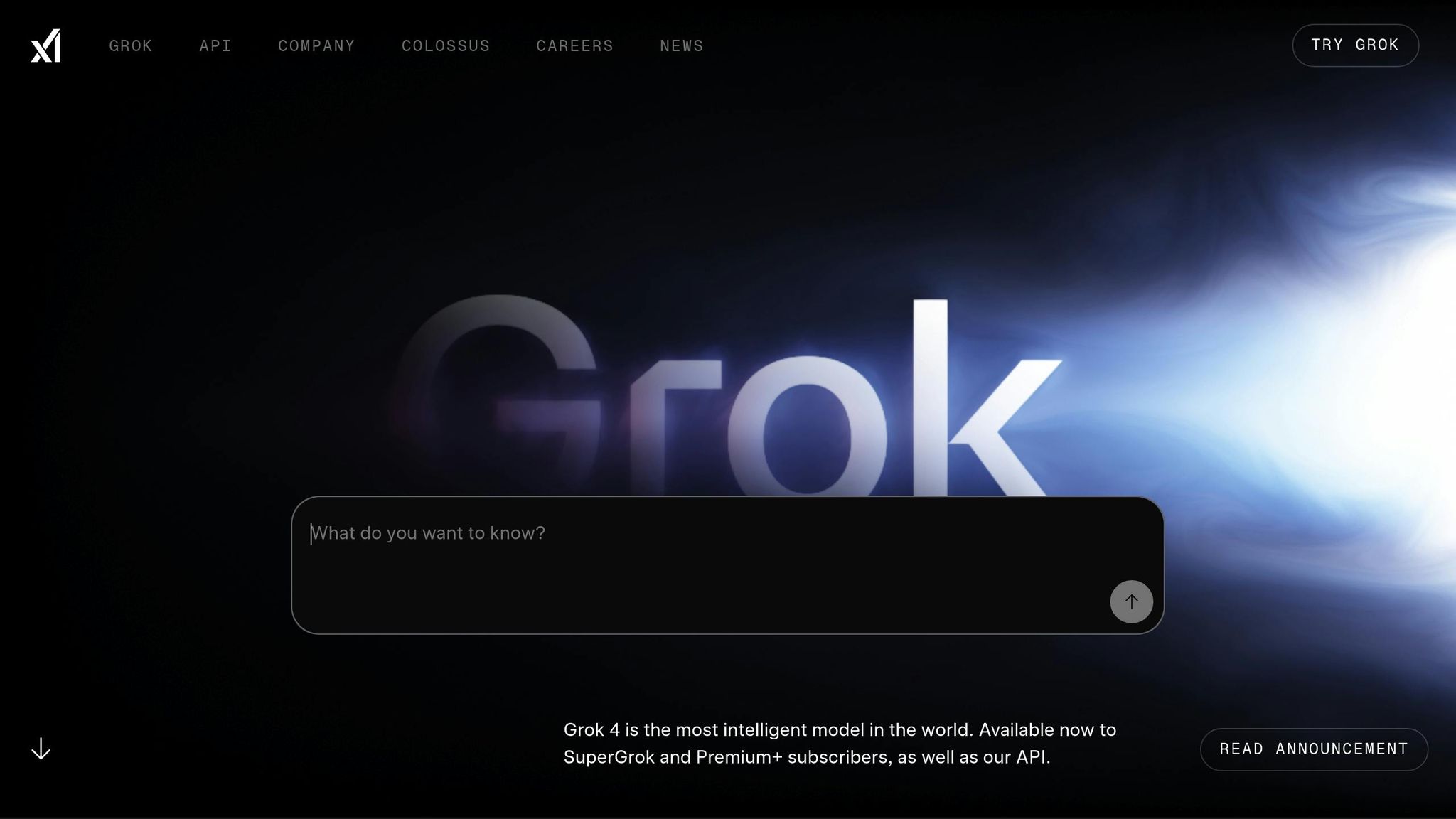Elon Musk’s $44 billion Twitter acquisition in 2022 was widely criticized as a financial misstep. By 2024, Twitter (rebranded as X) was struggling with declining revenue, massive debt, and a valuation slashed by 60–70%. But in 2025, Musk turned things around with a bold move: merging X with his AI company, xAI, in an all-stock deal that valued X at $33 billion. This merger not only eased X’s financial troubles but also positioned the combined entity as a $100 billion AI powerhouse.
Key points:
- Initial Struggles: X faced $25 billion in debt and underwhelming revenue, with EBITDA falling to $1.2 billion in 2025.
- xAI Acquisition: The all-stock deal shifted focus from social media to AI, leveraging X’s user base and xAI’s technology.
- Debt Resolution: Banks holding $13 billion in loans finally offloaded them, thanks to renewed investor interest in AI.
- AI Integration: AI tools improved user experience, advertising, and platform efficiency, creating new revenue streams.
This deal highlights a shift in tech acquisitions, prioritizing growth and innovation over cost-cutting. It’s a case study in how AI can transform struggling assets into high-growth ventures.
xAI's Acquisition of X: Deal Details and Business Logic

Deal Structure and Numbers
The acquisition of X by xAI was structured as an all-stock deal, allowing X's shareholders to gain equity in the newly merged company. This move not only eased X's legacy financial burdens but also positioned the company for future growth by tapping into xAI's expertise in artificial intelligence. Additionally, banks holding legacy loans benefited from the market's shift toward AI-driven technologies. This financial restructuring set the stage for a tech-focused transformation aimed at revitalizing the platform.
Why Musk Made This Move
Elon Musk's vision behind this acquisition was to build an integrated AI ecosystem. With the financial pressures alleviated, the merger allowed Musk to fully utilize AI's potential. By combining xAI's advanced technology with X's extensive platform, the company gained access to real-time user data, which could significantly enhance AI models and analytics. This integration brought about automated advertising, streamlined content moderation, and a transformation of X into an AI-centered service. Features like improved recommendation systems, automated customer support, and real-time translation not only elevate the user experience but also create new, sustainable revenue opportunities.
'xAI and X's future are intertwined': Inside Elon Musk's merger deal
How AI and Social Media Work Together
The collaboration between xAI and X has introduced a new era for the platform, combining artificial intelligence with social media to reshape its core functions. This integration aims to boost user engagement and streamline operations, keeping pace with the fast-changing digital world.
Using AI to Improve User Experience
AI tools play a crucial role in tailoring content, refining advertising strategies, and improving moderation by analyzing real-time user behavior. These tools adjust content recommendations to match individual preferences and make ads more relevant, creating a more personalized experience. Additionally, the platform supports multilingual interactions, making it more accessible to users worldwide. This approach not only deepens user engagement but also speeds up the development of new, data-driven features.
Accelerating Feature Development with Data
AI-powered automation allows the platform to gather and analyze continuous user feedback, enabling quicker updates and better predictive analytics. By relying on real-world data, the platform can refine its tools to meet user expectations and stay competitive in a rapidly evolving digital space.
The integration of AI with social media isn’t just about keeping up; it’s about creating a platform that’s more adaptive, engaging, and efficient, driving progress and delivering value across the board.
sbb-itb-9cd970b
What SaaS and AI Companies Can Learn About Acquisitions
The xAI-X deal highlights the importance of acquisitions that focus on strategic alignment and technological synergies. Instead of zeroing in on cost-cutting or debt management, this approach prioritizes creating lasting value by combining complementary strengths.
Combining AI Capabilities with Distribution Channels
Elon Musk’s strategy brought together cutting-edge AI innovation from xAI with the massive user base of X, giving the deal a powerful edge. While xAI contributed advanced AI capabilities, X provided instant access to hundreds of millions of users. This pairing tackled a common challenge for AI startups: scaling customer acquisition.
For SaaS and AI companies, the takeaway is clear - look beyond revenue figures when evaluating acquisition targets. A business with a smaller income but a large, engaged user base or strong distribution network can often be more valuable than a high-revenue company with limited reach. The goal is to match your AI tools with platforms that can amplify their impact.
For instance, if you’re developing machine learning models for data analysis, acquiring a company that already serves finance or healthcare clients could give you both the customer base and the domain-specific data needed for refinement. This kind of acquisition isn’t just about combining resources; it’s about creating new value by enhancing the user experience and leveraging existing distribution channels.
When done right, this strategic alignment sets the foundation for smooth post-acquisition integration.
Maximizing Value After an Acquisition
Once the deal is closed, the real challenge begins - integrating the two companies efficiently. The xAI-X example underscores the importance of quick and focused implementation. Instead of dragging out the process, successful integrations focus on immediate synergies that benefit users.
To achieve this, companies should develop a detailed 90-day integration plan before finalizing the deal. This plan should identify quick wins - early improvements that showcase value to users - while keeping long-term goals in mind. Metrics for success should be clear and actionable, ensuring progress is measurable.
Preserving the acquired company’s core strengths is equally important. Gradually merging systems and introducing enhancements helps reduce user churn and ensures a smoother transition. Rushing the process risks alienating customers and disrupting functionality.
Communication is another critical factor. A strong communication strategy can build trust and minimize uncertainty among users and stakeholders. By clearly outlining the benefits and integration timelines, companies can ease concerns and keep customers engaged throughout the transition.
Private Equity Lessons: New LBO Approaches for Tech Companies
The merger discussed earlier serves as a blueprint for how private equity firms can rethink leveraged buyouts (LBOs) in the tech sector. The xAI-X deal highlights a fresh perspective on tech LBOs, showing that strategies traditionally used in industries like manufacturing or retail don’t always translate well to AI and SaaS businesses. In these cases, success hinges more on driving innovation and user engagement than on simply cutting costs. This shift calls for a complete reimagining of how value is created in tech-focused deals.
Beyond Financial Restructuring
In the tech world, LBO strategies need to move beyond just restructuring debt. While financial engineering still has its place, the real value in acquiring AI and SaaS companies lies in improving operations and fostering innovation.
Traditional LBOs often prioritize reducing overhead, consolidating operations, and maximizing cash flow to pay down debt. But for tech companies, slashing budgets - especially in areas like R&D or talent - can cripple long-term growth. These businesses thrive on continuous investment in developing new technologies, hiring skilled talent, and scaling infrastructure. Aggressive cost-cutting in these areas can undermine the very foundation of a tech company’s value.
Instead, private equity firms need to focus on growth-oriented investments. Pouring resources into R&D, expanding infrastructure, and attracting top talent can create a competitive edge. The end goal shifts from immediate cost savings to building a superior product that commands higher prices and attracts a growing user base.
Another key difference is the longer timeline for realizing returns. Improvements in AI and SaaS businesses often take 12 to 18 months to show measurable impact on revenue. This extended timeline requires a more patient approach to performance tracking and exit strategies compared to traditional LBOs, where results are expected more quickly.
Old LBO Methods vs. New AI-Focused Approaches
The evolution from traditional to AI-focused LBO strategies is best understood by comparing their core principles and goals. The table below outlines the major differences:
| Traditional LBO Approach | AI-Focused LBO Approach |
|---|---|
| Focus: Cutting costs and servicing debt | Focus: Enhancing technology and growing the user base |
| Timeline: 3-5 years with immediate cost reductions | Timeline: 5-7 years with gradual value creation |
| Key Metrics: EBITDA margins, debt-to-equity ratios | Key Metrics: Monthly active users, AI model performance, customer lifetime value |
| Investment Strategy: Reduce capex, cut headcount | Investment Strategy: Invest in R&D, attract top tech talent |
| Value Creation: Operational efficiency and financial restructuring | Value Creation: Product innovation, market expansion, and data-driven growth |
| Exit Strategy: Strategic sale based on financial metrics | Exit Strategy: IPO or acquisition driven by tech leadership and growth potential |
This shift in strategy also demands a new skill set from private equity firms. Success in tech LBOs requires teams with expertise in AI, SaaS, and product development - or partnerships with advisors who specialize in these areas.
Evaluating potential investments becomes more complex as well. Instead of focusing exclusively on cash flow and debt capacity, firms must assess factors like the quality of the technology stack, the capabilities of the development team, and the potential for AI-driven innovations. While this approach takes more time upfront, it leads to smarter investments and, ultimately, higher returns.
Conclusion: Setting New Standards in AI and SaaS Deals
The xAI-X acquisition has introduced a fresh approach to tech mergers, moving beyond traditional cost-cutting to embrace strategic innovation. By focusing on reimagining underperforming assets through the integration of advanced technologies, this deal showcases how AI and SaaS companies can unlock new possibilities.
What makes this acquisition particularly noteworthy is its emphasis on blending complementary strengths. Combining AI capabilities with extensive distribution networks not only speeds up product development but also opens doors to revenue opportunities that would have been out of reach before the merger.
For the U.S. tech market, this deal shifts the focus for private equity firms and strategic buyers. Instead of relying solely on conventional financial metrics, there's now a growing emphasis on factors like data quality, AI model efficiency, user engagement, and cross-platform innovation potential. Companies that excel in these areas are poised to attract higher valuations in future transactions.
Patience also plays a key role in these types of tech deals. Unlike industries where results can be quickly reflected in quarterly earnings, AI and SaaS integrations often require a longer timeline to deliver meaningful outcomes. This underscores the importance of long-term investment strategies in the sector.
As AI-powered acquisitions gain momentum, the demand for tools that help identify promising targets is expected to rise. These evolving strategies offer valuable lessons for tech founders, investors, and acquirers, providing a roadmap for navigating the rapidly changing landscape.
Staying competitive in AI and SaaS means keeping a finger on the pulse of which technologies drive the most value. By doing so, you can make smarter investments and position yourself to capitalize on the next big wave of opportunities in these dynamic industries.
FAQs
How did xAI’s acquisition of X help turn around its financial struggles?
xAI’s acquisition of X turned what was once a struggling leveraged buyout into a major win. The $33 billion deal not only gave X the capital it desperately needed but also set the stage for growth, with projected revenues expected to hit $2.26 billion by 2025. Most of that growth is expected to come from advertising and subscription services.
The merger brought xAI’s advanced AI technologies into the mix, creating new opportunities that boosted revenue growth and improved profitability. As a result, xAI’s valuation skyrocketed to around $80 billion, making the acquisition a financial and strategic triumph for both companies.
How did xAI use AI technology to improve X’s user experience and generate new revenue opportunities?
xAI integrated advanced machine learning and natural language processing (NLP) technologies into X, creating more personalized user experiences and smarter content recommendations. These upgrades significantly increased user engagement while improving the platform’s ability to deliver more precise, targeted advertising.
On top of that, xAI launched new revenue opportunities, such as premium subscription services and enterprise AI solutions, which helped establish X as a frontrunner in using AI to drive business growth. This strategic move reshaped X into a more versatile and profitable platform, highlighting the impact of AI-driven advancements.
What can SaaS and AI companies learn from xAI’s acquisition of X about creating value through strategic alignment?
SaaS and AI companies can take a page from Musk's playbook: aligning acquisitions with a clear, long-term strategy is crucial for creating value. By tapping into AI-powered advancements and streamlining operations, even underperforming assets can evolve into engines of growth.
Musk’s strategy underscores the importance of weaving acquisitions into larger business goals, like improving efficiency, staying ahead of competitors, and fueling consistent growth. It’s a reminder that with careful planning, challenges can be reshaped into opportunities for success.



